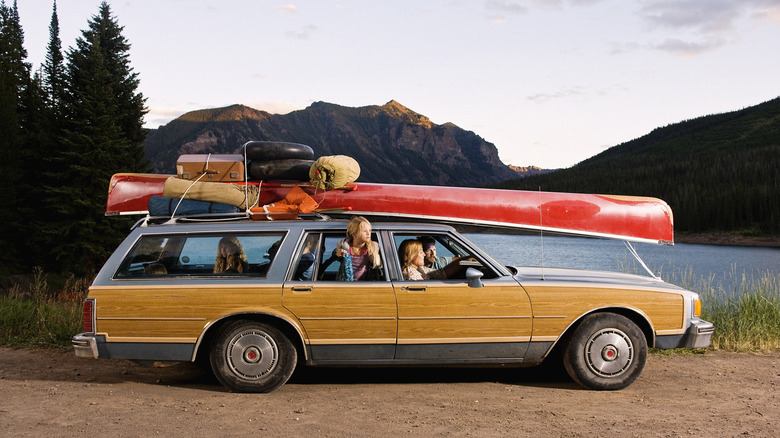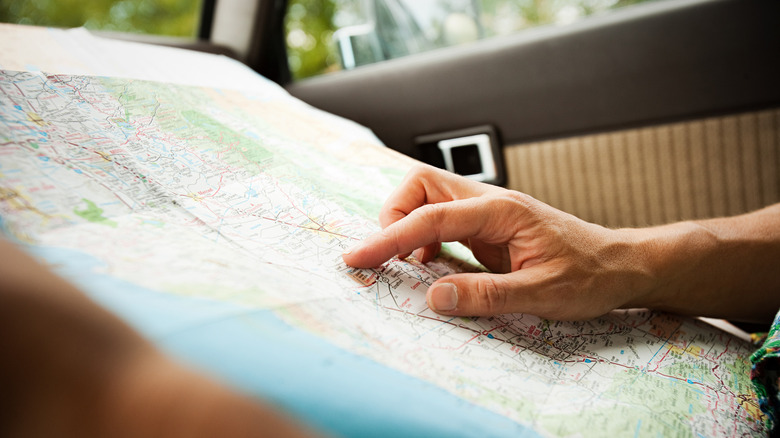Road Trip Across America Enjoying 70-Degree Weather The Whole Time With This Climate Scientist's Route
Do you finally have the vacation time to take that bucket-list road trip, but don't know where to start? Scared that inclement weather might follow you through your cross-country adventure? Want to try something different from the cliché Route 66? Well, climate scientist Brian Brettschneider has come up with an ingenious way to make sure your all-American road trip traverses only states where the weather is likely to be a comfy 70 degrees Fahrenheit.
Using data compiled from the National Centers for Environmental Information and weather reports registering temperature averages between 1981 and 2010, Brettschneider had the groundbreaking idea to create a route that would ensure travelers get the best experience out of their journey, avoiding cold spells and temperature shifts along the way. Originally, the map had just one route, but due to the success and popularity of his work, Brettschneider decided to update his project to include a version with three paths: a coastal route, an interior U.S. route, and a third option that takes drivers north to Canada and even Alaska. So buckle up, get some road snacks, roll down the windows, and don't forget to pick a cinematic playlist for what is sure to be the perfect U.S. road trip.
7,000 miles of 70-degree adventures
Make sure you've got a decent amount of time to dedicate to Brian Brettschneider's mild-weather road trip, as both the coastal and interior routes are at least 7,000 miles long. In fact, you'd have to take an entire year off from your work schedule to traverse the whole thing, but it'll be a worthwhile journey with the best and most consistent weather you've ever experienced. Brian's blog gives drivers step-by-step instructions on how to complete this epic journey. The coastal route begins in Tampa, Florida, in January, and heads nearly 7,500 miles through the country up the East Coast, west along the country's northern border and south to San Diego, California. The interior route starts in Brownsville, Texas, and also ends in San Diego after a journey through the Midwest and states including Montana and Arizona.
For the greatest variety of scenery and sites, we suggest following the coastal route. You can sink your toes in Florida's soft sands after the turn of the New Year, then cruise up I-95 to enjoy the natural beauty of North Carolina's Coastal Plain region come March. As summer begins in June, you'll work your way through various states, from New York to Montana, all within the month! Summertime in America can be a heated affair, making it difficult to avoid higher temperatures, so you'll be racing against the sun to get to your next stop. The road in July is also a speedy one, heading from Idaho through Oregon. As you enter fall, the road veers off into more mountainous terrain, onto eastern Oregon's highways that eventually take you to Utah. In October, rural roads take you to Albuquerque until November, when you'll escape the beginnings of winter in warm Phoenix. As December sets in, this epic year-long journey draws to a close, with the road heading through Los Angeles, culminating in San Diego.
Planning your U.S. road trip
The Interior Route, as listed on Brian's Blog, starts in Texas, and heads toward the Canadian border. On this drive, you'll experience the northern Rockies, the western Great Plains, and the Southwest Desert. This route will take you through Oklahoma, Kansas, Minnesota, Montana, and through Yellowstone National Park. Afterward, you'll continue through Wyoming and into Montana, east into North Dakota, then south into Nebraska. From here, you'll head to New Mexico, then Texas, until you reach San Diego. The rest of the route is shared with the Coastal Route and guarantees some incredible natural sights.
Since this itinerary gives you ample time in each place, you'll be able to visit some of the most important natural and man-made monuments in America, including the Constitution of the Commonwealth of Massachusetts, the Fox Theater in Detroit, the unmatched beauty of Montana's Glacier National Park, Monument Valley's red rocks in Utah, and the Grand Canyon in Arizona. Likewise, you'll have the opportunity to explore some of America's most thriving and historical cities. Since this road trip is a year-long affair, it may not be possible for everyone. If you can't take a year off to traverse the country, you could also do a fragment of the route and set your own pace. If you're lucky enough to be one of the few who can make this epic journey, then fill up your tank as this is undeniably one of the best ways to see America from the comfort of your own car.


